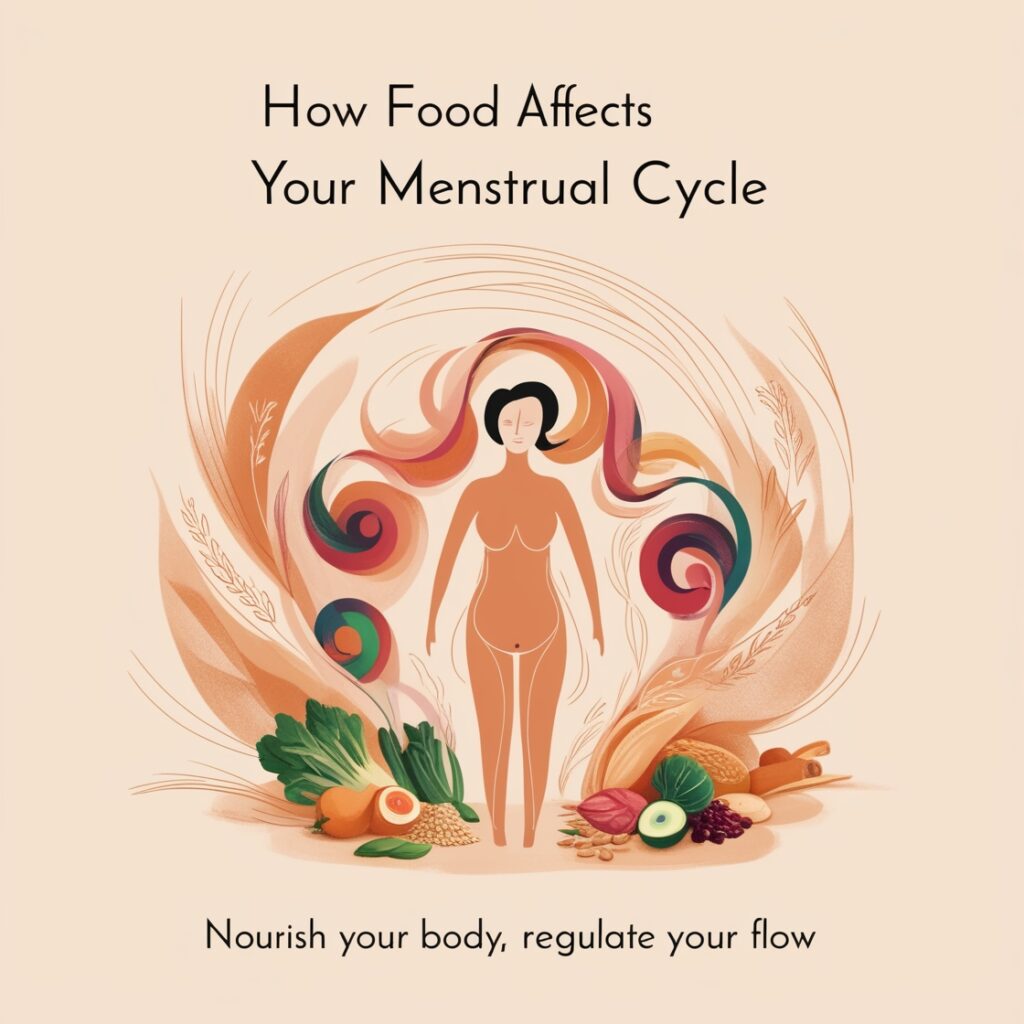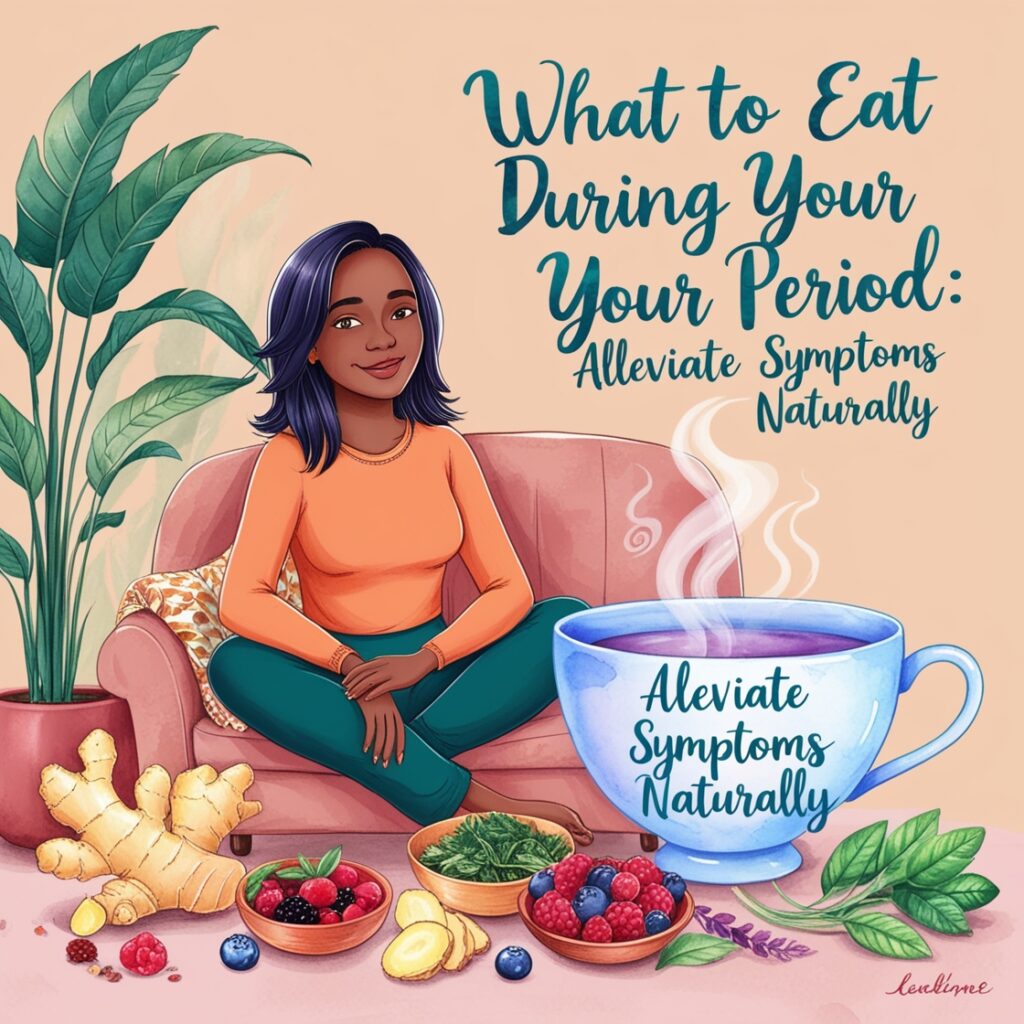Have you ever found yourself craving specific foods during your period? Whether it’s chocolate, salty snacks, or something else, many women experience intense cravings due to hormonal fluctuations. These changes can occur at different points throughout the menstrual cycle, and how you eat during each phase can significantly impact your symptoms. Eating for a better period involves choosing the right foods at the right time to balance your hormones and alleviate discomfort. In this blog, we’ll explore how eating for a better period can improve your health, reduce cramps, and help you feel your best.
Understanding How Food Affects Your Menstrual Cycle

Your body’s hormone levels change significantly during your menstrual cycle, influencing your energy, mood, and appetite. As Nicole Negron, a functional nutritionist, explains, “The fluctuations in estrogen, progesterone, and testosterone throughout the month require different nutritional and detoxification needs.” By adjusting your diet based on these changes, you can better support your body’s needs and experience fewer period symptoms like bloating, fatigue, and cramps.
Incorporating the right foods at the right times can help you feel more energized, reduce menstrual cramps, and even combat digestive issues.
Let’s break down how eating for a better period can make a real difference in your monthly cycle.
What to Eat Before Your Period: Preparing Your Body

The ovulatory phase, which occurs just before your period, is when your body releases an egg in preparation for pregnancy. This surge in estrogen can lead to a boost in energy. However, you may also find yourself feeling hungrier or craving certain foods. During this time, eating for a better period means fueling your body with nutrient-dense foods that sustain your energy.
To keep your energy levels up and support your hormonal needs, try foods like almonds, bananas, blueberries, and leafy greens. These options provide healthy fats, fiber, and antioxidants, which help stabilize blood sugar and prevent energy crashes. By eating for a better period in this phase, you can optimize your body’s response to rising estrogen.
Luteal Phase: Stay Energized and Balanced

As you transition into the luteal phase, which occurs after ovulation and before your period begins, estrogen levels drop sharply while progesterone rises. This hormonal shift can cause mood swings, fatigue, and irritability. Cravings for sugar and caffeine are common during this time, but eating for a better period means choosing alternatives that support your mood and energy levels without making symptoms worse.
Instead of reaching for sugar or caffeine, focus on magnesium-rich foods like spinach, pumpkin seeds, chia seeds, and dark chocolate. These foods can help boost your mood, relieve cramps, and reduce bloating. They also support healthy digestion and provide a natural source of energy. By eating for a better period in the luteal phase, you can keep energy highs steady and avoid the dips that come with processed foods.
What to Eat During Your Period: Alleviate Symptoms Naturally

When your period begins, you may experience symptoms like cramps, bloating, and fatigue. As estrogen levels start to rise again, it’s essential to focus on foods that ease these symptoms. Eating for a better period during this time can help alleviate period cramps and reduce digestive issues like constipation.
To reduce inflammation and support your body, include anti-inflammatory foods such as turmeric, ginger, coriander, and cardamom in your meals. These spices have been used for centuries to relieve menstrual discomfort and can help with pain management. Additionally, replenish lost nutrients with iron-rich foods like chickpeas, cheese, legumes, and fish. These options support your energy levels and combat fatigue caused by iron loss during menstruation.
For better digestion, try snacking on dates to provide fiber and promote healthy bowel movements. Eating for a better period during your cycle means supporting both your hormones and your digestive system.
Post-Period Phase: Rebuild and Recharge

Once your period ends, you enter the follicular phase, when estrogen levels begin to rise again. During this phase, your body starts to prepare for the next cycle. Eating for a better period in this phase focuses on nourishing your body with foods that support estrogen metabolism and gut health.
Incorporate fermented foods like sauerkraut, kefir, and kombucha to promote a healthy gut microbiome and support detoxification. Your energy levels will likely increase as your body prepares for ovulation, so eating for a better period during this time also means fueling up with foods that provide lasting energy, such as pumpkin seeds and nuts.
‘Happy Period’ Turmeric Hummus Recipe: A Delicious and Healing Snack

If you’re looking for a simple, nutritious snack to help you feel better during your period, try this ‘Happy Period’ Turmeric Hummus. It’s a perfect example of eating for a better period, combining iron-rich chickpeas with the anti-inflammatory power of turmeric. This snack is easy to make and can help reduce cramps while boosting your energy levels.
Ingredients:
- 400g chickpeas, liquid reserved
- ½ tbsp tahini
- 1 tsp ground turmeric
- ½ lemon, zested and juiced
- 1 garlic clove, finely grated
- Sea salt
- Freshly ground black pepper
- Olive oil
Method:
- Blitz the chickpeas with half of the canning liquid until smooth.
- Add turmeric, garlic, lemon zest, lemon juice, tahini, sea salt, and black pepper, and pulse until combined.
- Spoon into a bowl, drizzle with olive oil and enjoy with whole grain pita or veggies.
This recipe is a simple, delicious way to nourish your body with the nutrients it needs for a better period.
Conclusion: Nourish Your Body and Embrace Your Cycle
When it comes to eating for a better period, the key is listening to your body’s needs and providing it with the right nutrients at the right times. From the follicular phase to the luteal phase and beyond, your body’s nutritional needs change throughout the month. By focusing on nutrient-dense, anti-inflammatory foods and avoiding processed sugars and caffeine, you can help your body feel its best and reduce uncomfortable period symptoms.
Remember, eating for a better period isn’t just about the foods you choose—it’s about understanding how your body works and providing it with the support it needs during each phase of your cycle. By making small changes to your diet and incorporating foods that nourish your hormones, you can take control of your period and feel more balanced throughout the month.
Frequently Asked Questions
What are the best foods for hormonal balance during your period?
Eating for a better period means including foods that promote hormonal balance. For example, magnesium-rich foods like pumpkin seeds and spinach help regulate hormone production. Healthy fats from avocados and nuts support estrogen metabolism, while fermented foods like kefir and sauerkraut promote gut health, aiding hormone detox.
How do anti-inflammatory foods help with period pain?
Consuming anti-inflammatory foods is essential for eating for a better period. Ingredients like turmeric, ginger, and cardamom naturally reduce period pain and cramps. They combat inflammation, which often causes pain during menstruation. These foods work by easing muscle tension and supporting the body’s natural healing process during your cycle.
Can magnesium-rich foods reduce bloating during your period?
Yes, magnesium-rich foods like spinach, pumpkin seeds, and dark chocolate can significantly reduce bloating during your period. By maintaining proper fluid balance, magnesium helps ease the bloating sensation caused by hormonal fluctuations. Including these foods while eating for a better period can help alleviate discomfort and improve digestion during menstruation.
What role do chickpeas play in eating for a better period?
Chickpeas are a fantastic food choice when eating for a better period. They are rich in iron and B12, which help replenish nutrients lost during menstruation. These legumes also provide a steady source of energy and help combat fatigue. Including chickpeas in your diet supports your body’s nutritional needs during your cycle.
How can fermented foods support hormonal balance during menstruation?
Fermented foods like sauerkraut, kefir, and kombucha support hormonal balance by promoting a healthy gut microbiome. Eating for a better period includes these foods because they improve digestion and aid in the detoxification of excess hormones, like estrogen. A balanced gut helps the body metabolize hormones more efficiently, reducing PMS symptoms.
What foods should you avoid when eating for a better period?
When eating for a better period, avoid processed sugars and excess caffeine, as they can worsen PMS symptoms like fatigue and irritability. Instead of indulging in sugary snacks, focus on magnesium-rich foods like pumpkin seeds and spinach to help stabilize your mood. Reducing inflammation with anti-inflammatory foods also helps.
How does eating for a better period improve mood during PMS?
Eating for a better period can greatly improve mood during PMS by providing your body with nutrient-dense foods that support hormonal balance. Magnesium-rich foods like pumpkin seeds and dark chocolate help regulate mood, while anti-inflammatory foods like turmeric and ginger reduce irritability and inflammation, enhancing emotional well-being.
What are the benefits of eating dark chocolate during your period?
Dark chocolate is a great choice when eating for a better period, especially during the luteal phase. It’s rich in magnesium, which helps reduce cramps, and it satisfies sugar cravings without causing energy crashes. Additionally, the antioxidants in dark chocolate help alleviate period pain by reducing inflammation in the body.
How do foods like bananas and almonds help with energy during your period?
Bananas and almonds are ideal foods to include when eating for a better period. Bananas are rich in potassium, which helps maintain fluid balance and reduce bloating, while almonds provide healthy fats and protein, which stabilize blood sugar levels. Together, these foods help boost energy and prevent fatigue during menstruation.
